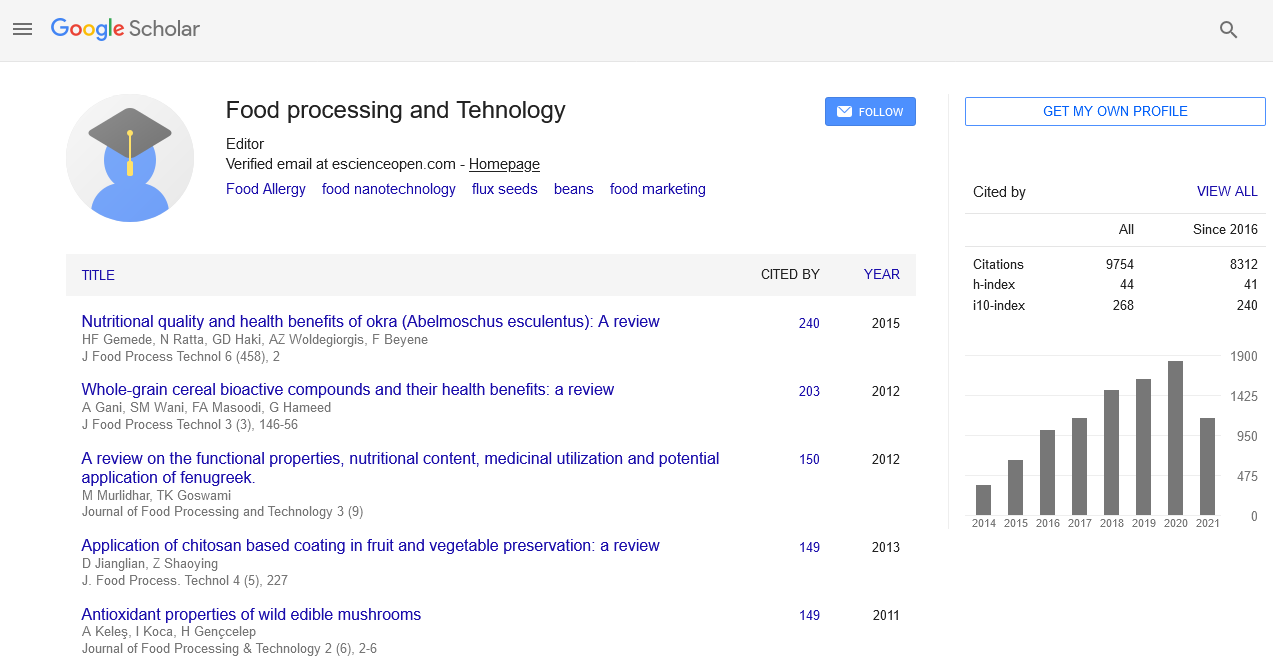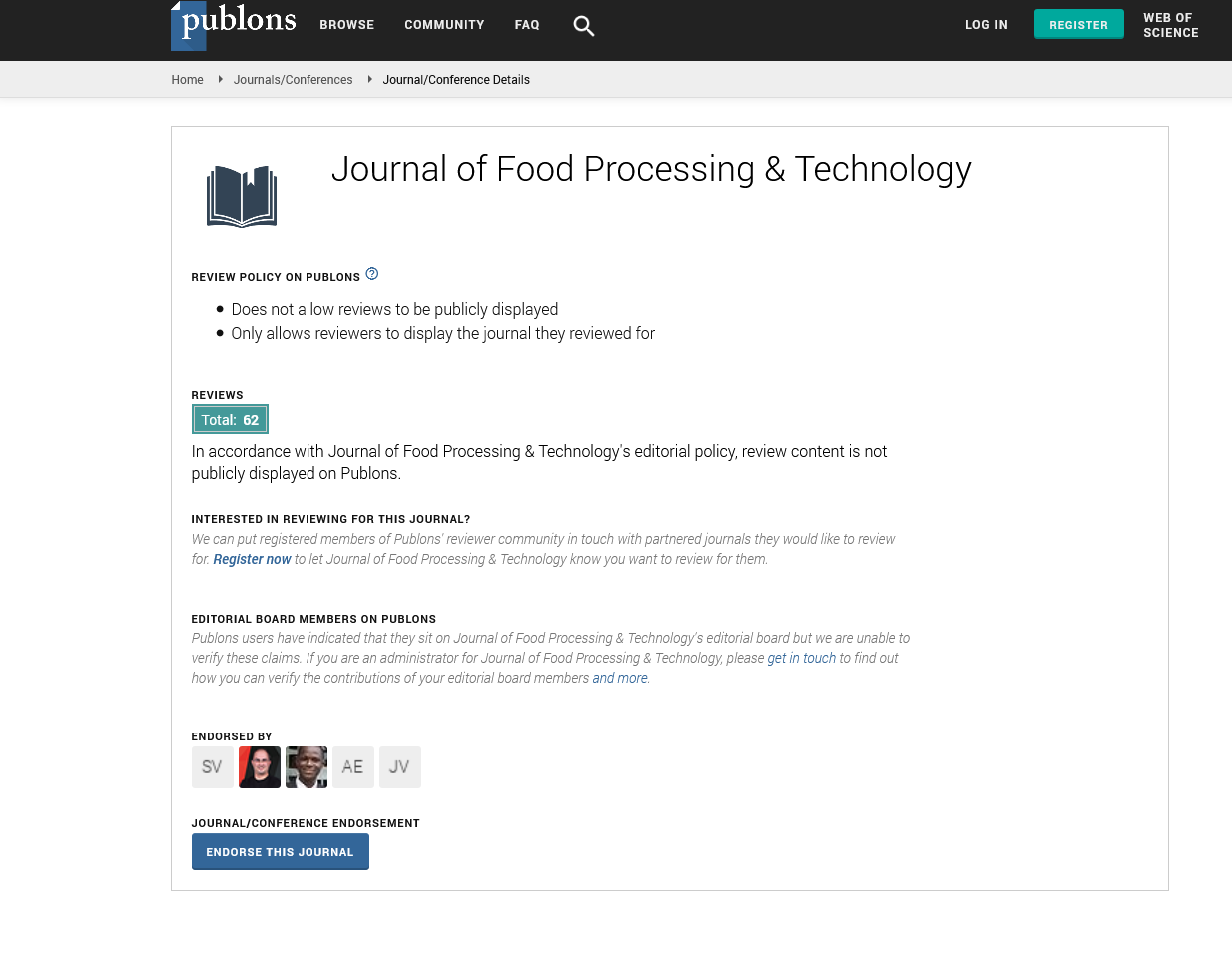Indexed In
- Genamics JournalSeek
- Academic Keys
- JournalTOCs
- China National Knowledge Infrastructure (CNKI)
- Access to Global Online Research in Agriculture (AGORA)
- Centre for Agriculture and Biosciences International (CABI)
- RefSeek
- Directory of Research Journal Indexing (DRJI)
- Hamdard University
- EBSCO A-Z
- OCLC- WorldCat
- Scholarsteer
- SWB online catalog
- Publons
- Euro Pub
- Google Scholar
Useful Links
Share This Page
Journal Flyer

Open Access Journals
- Agri and Aquaculture
- Biochemistry
- Bioinformatics & Systems Biology
- Business & Management
- Chemistry
- Clinical Sciences
- Engineering
- Food & Nutrition
- General Science
- Genetics & Molecular Biology
- Immunology & Microbiology
- Medical Sciences
- Neuroscience & Psychology
- Nursing & Health Care
- Pharmaceutical Sciences
Contribution of forest foods to womenâ??s nutrient intake and household food security in the biodiversityrich Cameroonian forests
Global Food Security and Sustainability Conference
September 05-07, 2016 Beijing, China
Robert Fungo, John Muyonga, Margaret Kabahenda, Archileo Kaaya, Clement A Okia, Judy Loo and Laura Snook
Makerere University, Kampala, Uganda
Bioversity International, Italy
World Agroforestry Centre (ICRAF), Kampala, Uganda
Posters & Accepted Abstracts: J Food Process Technol
Abstract:
The study was conducted to determine the contribution of forest foods to the dietary intake and household food security of women. A cross sectional study was conducted among 279 households. The food frequency questionnaire (FFQ) was used to collect food consumption data which was used to determine the household dietary diversity score (HDDS), food variety score (FVS) and forest food consumption score (FFCS). Household food insecurity access scale (HFIAS) was determined and spearman�??s correlation was used to establish relation between consumption of forest foods and HFIAS. The dietary intake was estimated from two 24 hour recalls. Forest food intake and nutrients supplied were estimated and compared to RDAs. The identified 47 forest foods were consumed by 98% of respondents in one week and 17% in 24 hours. Although, forest plant foods contributed 1% of total daily energy, they contributed considerably to vitamin A, sodium, iron and zinc intakes of women. Despite a high bio-diverse pool of foods, most households (83%) suffered from high food insecurity based on the HFAIS findings. There was a significant and negative correlation between HFIAS score and the FFCS (R2=-0.169, P=0.0006) showing that forest foods play a role in ensuring food security among the forest dependent communities. Forest foods are widely consumed by forest dependent communities. Given their rich nutrient content, they have potential to contribute to food and nutrition security.
Biography :
Email: rfungom@yahoo.com


